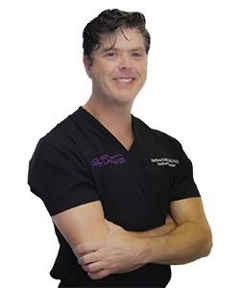The Dobbs Clubfoot Center at the Paley Orthopedic and Spine Institute at St. Mary’s

Matthew Dobbs, MD, FACS
The Dobbs Clubfoot Center at the Paley Orthopedic and Spine Institute was established in 2020, and is located on the campus of St Mary’s Medical Center.
The Center is led by Matthew Dobbs, MD, FACS. He is internationally recognized for his expertise and innovation in the field of pediatric foot and lower limb deformities
as well as in the management of patients with cerebral palsy spasticity.
Dr. Dobbs trained under the guidance of Professor Ignacio Ponseti (Ponseti method). Since that time, he has introduced the Ponseti method for clubfoot management to surgeons in more than 50 countries. He has established a “train the trainers”
program for clubfoot management where key thought leaders from different countries are identified and brought to him for intense training in the method so that they are then empowered to return home and train other surgeons in their own country.
About Clubfoot
Present at birth, clubfoot is one of the most common congenital deformities which occur in otherwise normal infants. Clubfoot is also known as congenital talipes equinovarus.
Clubfoot affects 1 in 750 children worldwide. The cause of clubfoot is not known. One foot (unilateral) or both feet (bilateral) may be affected. Clubfoot can be seen at birth or sometimes during a prenatal ultrasound. The clubfoot turns down and inward.
Clubfoot affects the tendons and ligaments not only in the foot but in the calf muscle as well.
Clubfoot can range from mild to severe and will not resolve on its own. Clubfoot is not painful to babies. Though you might be worried, clubfoot treatment will help your child grow up to live a normal life.
Nearly half of all cases (40%) occur bilaterally (affecting both feet). There appears to be a genetic component to clubfoot, as a 1965 study by Ruth Wynne-Davies reported that in families with one child born with clubfoot, the chance of a second child
being born with the deformity is 1 in 35.
Treatment for clubfoot is recommended at a very young age, often within a week or two of birth. At this age, progressive casting, known as the Ponseti Method, often results in complete correction with low rates of recurrence. A large number of cases,
however, particularly those in developing countries, go untreated or are poorly treated. Individuals with untreated or poorly-treated clubfoot often suffer severely limited mobility and pain, resulting in staggering social, psychological, and financial
consequences for not only the patient, but their family as well. For more information, see Recurrent & Untreated Clubfoot.
To schedule an appointment or for more information, please call 561-844-5255.